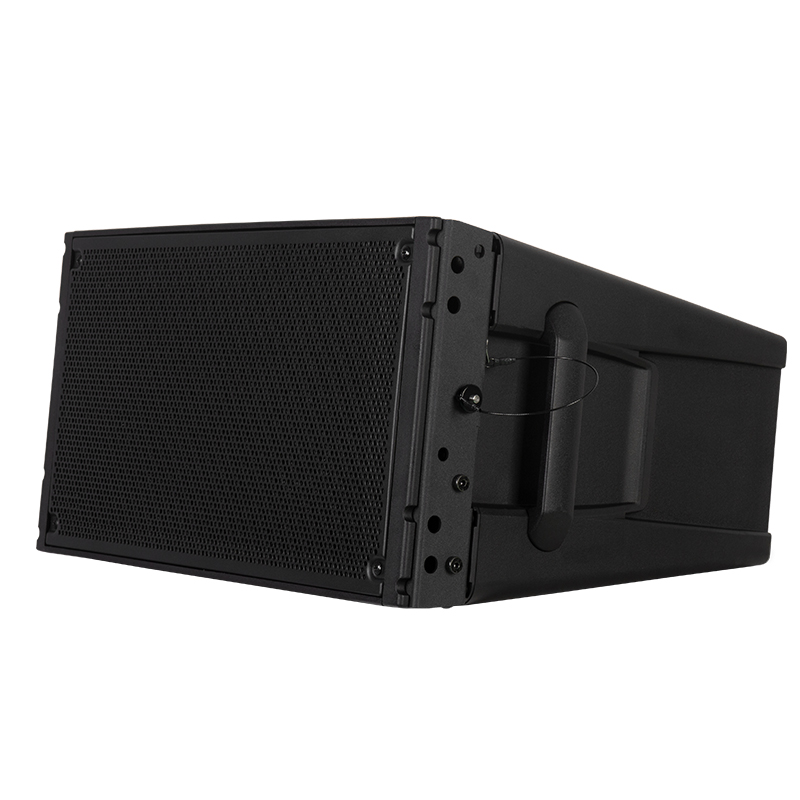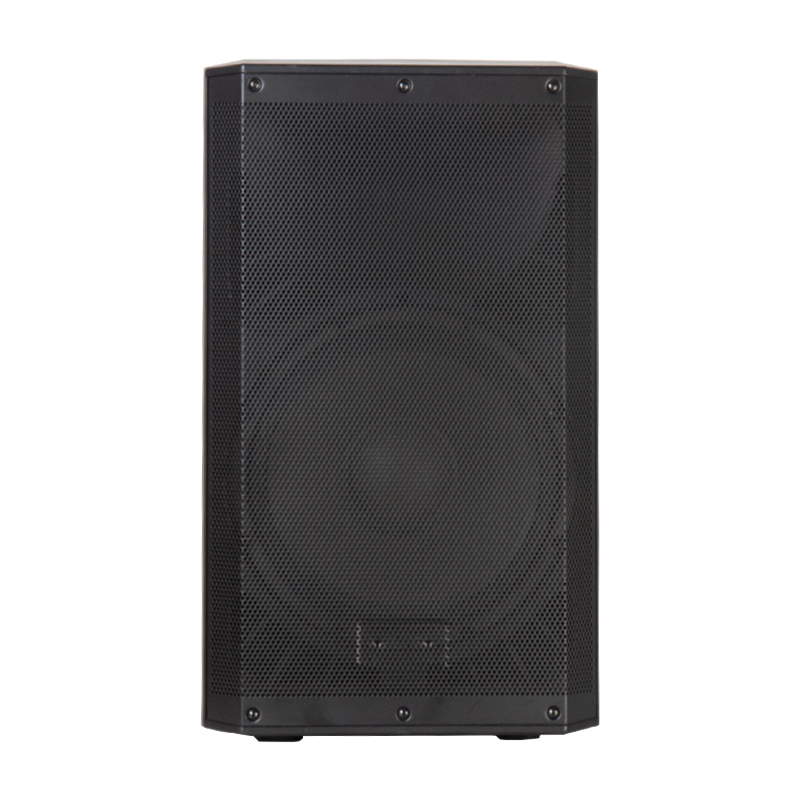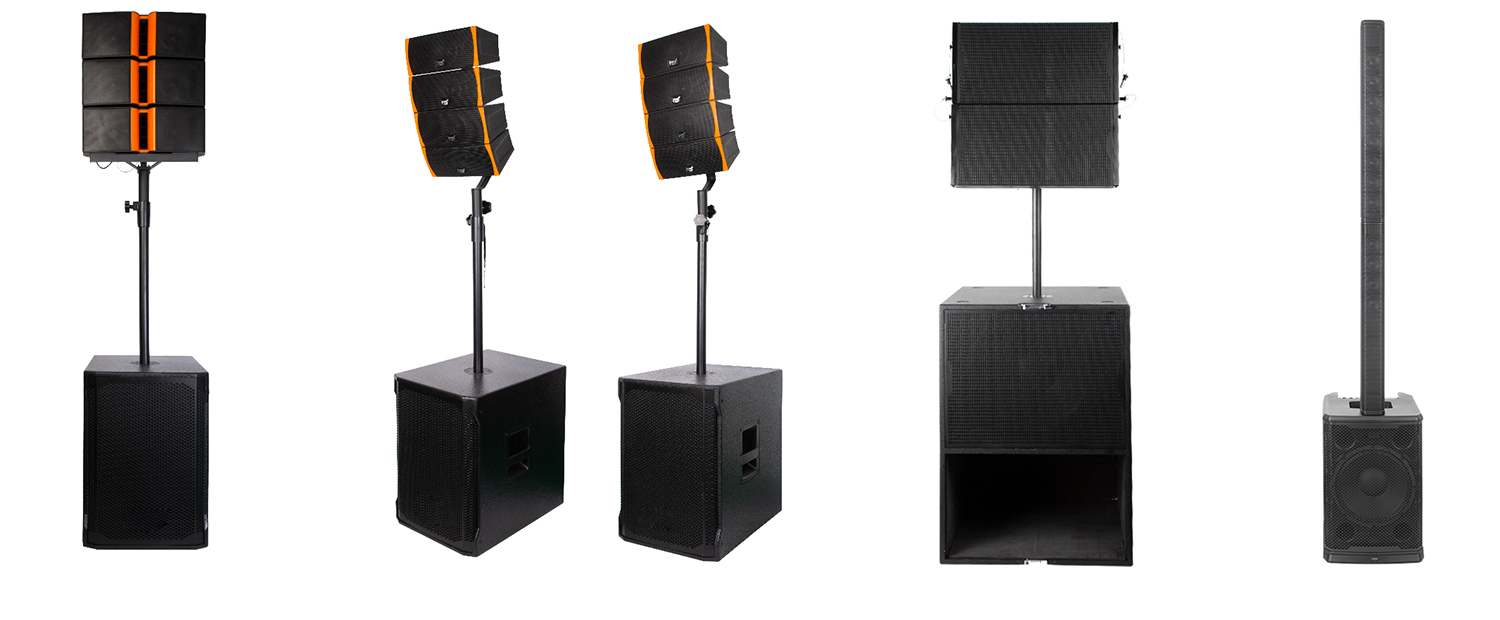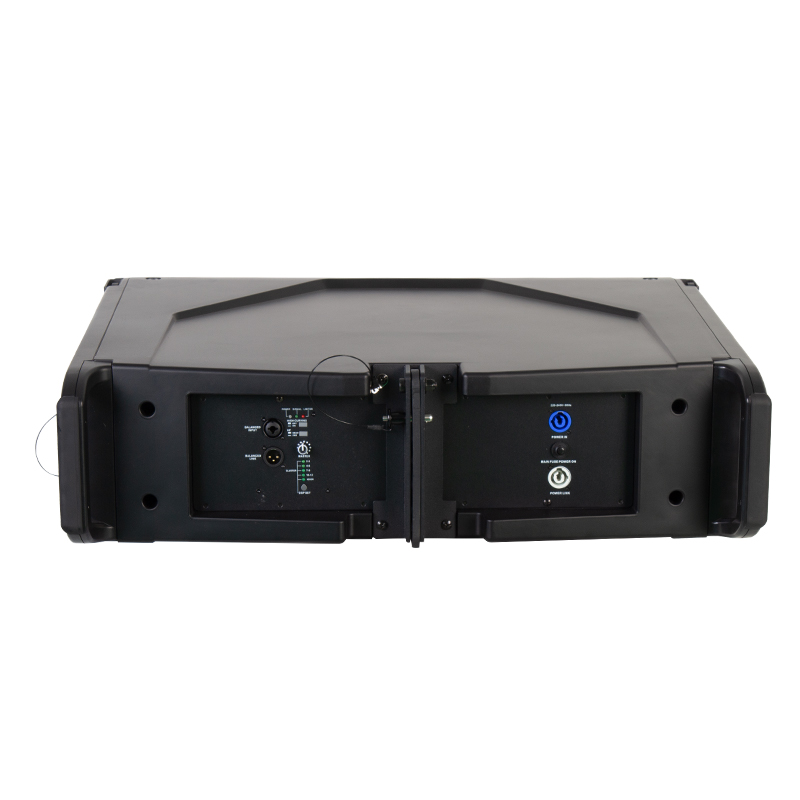
The Evolution of Powered Speaker Systems
In professional audio, efficiency and reliability drive every innovation. The powered speaker system emerged as a direct response to the limitations of passive setups—where separate amplifiers, heavy racks, and signal losses slowed deployment and compromised sound quality.
Today, powered systems combine amplification, signal processing, and driver management into one intelligent enclosure. For sound engineers, this integration means faster setup, consistent performance, and fewer points of failure. For manufacturers, it represents a new era of precision manufacturing and data-driven tuning.
Inside the Technology: How Powered Systems Deliver Acoustic Precision
At the core of a powered speaker system lies Class D amplifier technology, which converts electrical power into acoustic energy with over 90% efficiency. Unlike analog amplification, Class D designs minimize heat generation, allowing compact, lightweight enclosures without sacrificing output power.
Paired with digital signal processing (DSP), these amplifiers manage crossover frequencies, equalization, delay, and limiting—all in real time. DSP ensures that every driver in the system receives the correct amount of energy at the exact moment it’s needed, reducing distortion and phase irregularities.
Advanced models integrate feedback sensors and software-based calibration tools, enabling users to adjust performance for different acoustic environments. Studies by the Audio Engineering Society (AES) show that well-calibrated DSP-controlled systems deliver up to 20% greater frequency accuracy across variable venue conditions compared to analog setups.
Powered Systems vs. Traditional Passive Setups
| Feature | Passive Speaker System | Powered Speaker System |
|---|---|---|
| Amplifier Placement | External rack | Integrated Class D module |
| Cabling | Long runs, signal loss risk | Simplified connections |
| System Calibration | Manual and time-consuming | DSP auto-configuration |
| Portability | Heavy and complex | Compact, ready-to-use |
| Efficiency | 50–70% | 90%+ energy efficiency |
| Reliability | Prone to mismatched components | Factory-calibrated consistency |
The unified design approach of powered systems eliminates the guesswork of pairing amplifiers and speakers. With built-in DSP presets, users achieve optimized sound performance across diverse venues—from open-air festivals to small recording studios.
Engineering Advantages and Professional Value
1. Streamlined Power and Control
Each driver has a dedicated amplifier channel, ensuring perfect frequency separation and minimal signal interference.
2. Consistent Sound Output
Pre-calibrated DSP programs maintain tonal balance even under changing environmental conditions.
3. Quick Setup and Transport
Plug-and-play functionality reduces installation time by up to 50%, making powered systems ideal for event rentals and touring professionals.
4. Safety and Protection
Built-in limiters prevent thermal overload and driver clipping, extending component lifespan and maintaining consistent SPL output.
5. Long-Term Cost Efficiency
The reduced need for external equipment, racks, and maintenance creates a better return on investment for venues and integrators.
Applications and Case Study: Performance Meets Practicality
Live Event Sound Systems
Concert organizers and touring companies rely on powered PA speakers for fast setup and uniform coverage. Integrated DSP tuning simplifies adjustment between venues of varying size and shape.
Theater and Auditorium Installations
Powered systems deliver clear vocal projection and balanced music reproduction, essential for performing arts spaces.
Recording and Broadcast Studios
Active near-field monitors within powered systems provide high-resolution sound for critical listening and mixing accuracy.
Case Example:
A Southeast Asian rental company replaced traditional racks with 150 powered PA units from Audfine. Deployment time decreased by 42%, while energy consumption dropped by 18%. The system’s DSP presets ensured identical sound signatures across multiple event sites.
Product Recommendation: Choosing the Right Powered Speaker System
For Large Outdoor Events
-
Recommended Type: Active Line Array Systems
-
Key Features: Long-throw coverage, modular scalability, high SPL
-
Ideal For: Stadiums, concerts, outdoor festivals
For Medium Indoor Venues
-
Recommended Type: Powered PA Speakers
-
Key Features: Versatile coverage, limiter protection, quick setup
-
Ideal For: Theaters, corporate events, multi-purpose halls
For Studio Applications
-
Recommended Type: Active Studio Monitors
-
Key Features: Flat frequency response, DSP tuning, compact form
-
Ideal For: Music production, mixing, and broadcasting
For Retail or Business Environments
-
Recommended Type: Column Powered Speakers
-
Key Features: Elegant vertical design, wide dispersion
-
Ideal For: Restaurants, shopping centers, educational spaces
For Bass Extension
-
Recommended Type: Active Subwoofers
-
Key Features: Deep response, Class D amplification, thermal safety
-
Ideal For: Clubs, theaters, and live music stages
Redefining Efficiency: How Powered Systems Shape the Future of Audio
The evolution of powered speaker systems reflects a global shift toward intelligent sound reinforcement—where acoustic precision meets mobility and reliability. By combining DSP intelligence, Class D efficiency, and industrial engineering, powered systems are setting new standards for professional sound environments.
Audfine, as a leading powered speaker system manufacturer, continues to innovate across acoustic engineering, DSP optimization, and cabinet design—offering professionals systems that deliver both performance and predictability.
To explore the full product lineup or request a tailored configuration plan, visit the Audfine homepage or contact our engineering team for consultation and specifications.


